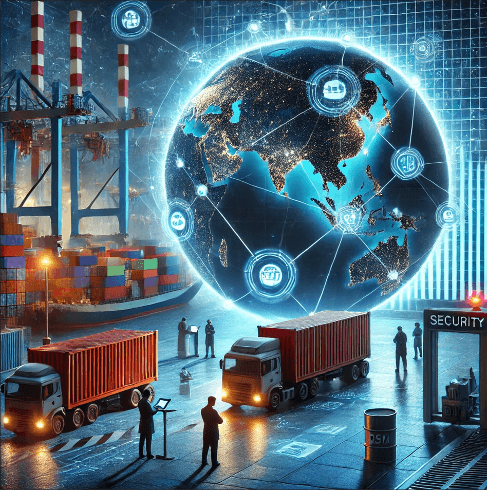


The multilateral export control regimes
The four main multilateral export control regimes differ in their composition of participating states, primarily exporters and key technology-holders in their respective areas.
The participating states coordinate export control policies, share good practices on the implementation of these policies, and exchange information on proliferation cases, illicit acquisition attempts and on licences they have denied. The participating states continuously update the regimes’ control lists and discuss relevant technological developments. The regimes create important forums for exchange among national policy and licensing officials, technical experts, and enforcement and intelligence officers.
The regimes are neither international treaties nor legally binding agreements between states but, over time, their functions have become increasingly institutionalised. The participating states take all decisions within each regime by consensus, thus increasing the likelihood of decisions being implemented by all participating states – but also making it more difficult to reach an agreement on decisions. Each participating state is individually responsible for implementing export control mechanisms, licensing criteria, and control lists and good practices, prescribed by the regime, through national laws and their domestic licensing and enforcement systems. All licensing decisions are taken by the exporting state at the national level.

The multilateral export control regimes are important international instruments because they provide de facto international standards and helpful resources for all states, including those that are not members, which otherwise require significant domestic technical expertise and resources. The membership of the regimes expanded, particularly during the 1990s and early 2000s, but since the 2010s has largely stagnated for all regimes.
The Nuclear Suppliers Group
The NSG is currently the main multilateral export control regime concerned with the non-proliferation of nuclear weapons. The NSG was created in 1974 as the ‘London Club’ comprising seven major nuclear supplier countries, in response to the first nuclear weapon test conducted by India – a state not recognised as a nuclear weapon state under the Treaty on the Non-proliferation of Nuclear Weapons (NPT). The NSG initially created a set of guidelines incorporating a list of items triggering IAEA safeguards and remained largely dormant between 1978 and 1990. In 1992, the NSG established guidelines for transfers of nuclear-related dual-use equipment, material and technology, an information exchange, an exchange of denial notifications, and a requirement for trigger list item recipients to have signed a full-scale safeguards agreement. The NSG has 48 participating governments and permanent observer status has been granted to the European Commission and the chair of the Zangger Committee.
The Australia Group
The Australia Group is a multilateral export control regime harmonising export controls to prevent states from contributing to the proliferation of chemical and biological weapons. The UN investigations into the use of chemical weapons in the Iran–Iraq War was a catalyst for the Australian initiative that ultimately led to the creation of the Australia Group in 1985. The investigations had found evidence for illicit procurement of precursor chemicals and materials from several Western states by both Iran and Iraq. Since its creation, the scope of the Australia Group has expanded to include chemical and biological weapons and equipment, materials and technology relevant to their development, production and use. Its membership has also increased from its 15 founding members to currently 42 states and the European Union. One state has submitted a political declaration to formally adhere to the Australia Group guidelines and control lists.1
The Missile Technology Control Regime
The MTCR was created in 1987 by the Group of Seven largest industrialised states and has since grown to include 35 participating states, referred to as the partners. Another three states have unilaterally declared their formal adherence to the guidelines and control lists of the MTCR, but have not been admitted as partners. The purpose of the MTCR is to contribute to preventing the proliferation of nuclear weapons by impeding the proliferation of missiles and other uncrewed nuclear weapon delivery systems. The scope of the controls expanded to include ballistic and cruise missiles and all uncrewed aerial vehicles (UAVs) capable of delivering chemical, biological or nuclear weapons. The MTCR partners committed to deny – in all but the most exceptional circumstances – licence applications for transfers of uncrewed delivery systems with a ‘payload of at least 500 kg to a range of at least 300 km’ or which are destined to be used to deliver chemical, biological or nuclear weapons (Category I). The MTCR further prescribes that transfers should be subject to case-by-case licensing decisions by partner governments for missiles and UAVs with a maximum range of at least 300 km and a wide range of dual-use goods, materials and technologies for missile, UAV and space launch vehicle applications (Category II).2
The Wassenaar Arrangement
The Wassenaar Arrangement became operational in 1996 (Wassenaar Arrangement, 2022a). The membership of the Wassenaar Arrangement has since expanded to include 42 participating states (Wassenaar Arrangement, 2022b). The objective of the Wassenaar Arrangement is to increase transparency and responsibility in transfers of conventional arms as well as dual-use goods and technologies related to conventional military capabilities. The Wassenaar Arrangement guidelines seek to harmonise export controls to prevent transfers from contributing to ‘destabilizing accumulations’ of conventional arms and dual-use items that would endanger international and regional security and stability, later expanded to include preventing such transfers to terrorists. The Wassenaar Arrangement also established control lists and information exchange mechanisms between participating states on licence denials, and in some cases on licences granted for especially sensitive items.
A. Q. Khan’s proliferation network
Dr Abdul Qadeer Khan (1936–2021) was a Pakistani metallurgist who was both instrumental in the development of Pakistan’s nuclear weapon and missile programmes and headed the largest known international proliferation network that has been uncovered to date. Following his studies in Europe, Khan began working for a subcontractor to the European uranium enrichment consortium ‘URENCO’. He obtained and later transferred technology and know-how on centrifuges for uranium enrichment to Pakistan. Khan became head of Pakistan’s enrichment programme and used his contacts to set up an illicit procurement network for the Pakistani nuclear programme. However, Khan’s activities also expanded to exports of nuclear enrichment and weapons technology and imports of missile technology. While certain parts of his activities had been uncovered previously by law enforcement and intelligence agencies, it was not until 2003, after the seizure of a shipment of centrifuge components en route to Libya and resulting revelations, that substantial information on Khan’s proliferation activities – involving Iran, North Korea and others – was made public. The revelation of Khan’s proliferation network and activities resulted in increased support for strengthening international export controls and related non-proliferation efforts, including the adoption of United Nations Security Council Resolution 1540 and the reform of the Nuclear Suppliers Group.3
United Nations Security Council Resolution 1540
Following the terrorist attacks of 11 September 2001 and the exposure of the activities of A. Q. Khan’s proliferation network in 2003, the international community, led by the United States, initiated a new focus on the threats posed by non-state actors, particularly terrorists, in the area of nuclear, chemical and biological weapons. The UN Security Council entered into consultations that resulted in a binding resolution being adopted under Chapter VII of the UN Charter as UN Security Council Resolution (UNSCR) 1540 in 2004. Since its adoption, the resolution has proved instrumental in significantly increasing the global creation and strengthening of export control systems, including through the numerous assistance and capacity-building programmes that have subsequently been implemented.
According to one of the main operational provisions of UNSCR 1540 all states shall:
take and enforce effective measures to establish domestic controls to prevent the proliferation of nuclear, chemical, or biological weapons and their means of delivery, including by establishing appropriate controls over related materials’
United Nations Security Council, 2004
As the first resolution binding on all UN member states to address all CBN weapons, UNSCR 1540 has been widely used as a legal reference justifying the establishment of new export controls, increased engagement with industry and academia and the adoption of export control systems by all states.
Catch-all controls
The multilateral export control regimes have generally opted to choose technical parameters to characterize controlled items so that only the most relevant items with particularly desirable performance characteristics trigger a licensing requirement. However, to avoid controls being circumvented by procurement of items not (yet) listed or just under the threshold of listed technical parameters, all regimes introduced so-called catch-all controls that enable states to impose controls on items that do not appear on their control lists but which are likely to be used for a proscribed end-use. Under a catch-all provision, national authorities can inform an exporter of a possible proscribed end-use to impose a licencing requirement, and an exporter that becomes aware of such a possible end-use is required to inform the authorities which can then decide whether to require a licence. Notably, this also makes catch-all controls particularly reliant on access to relevant intelligence and the exercising of due diligence by exporters. Catch-all controls enable states to balance security-driven control requirements with economically driven trade facilitation imperatives, by avoiding the introduction of broad list-based controls while retaining the ability to impose controls based on available information on the likely end-use.
Contemporary export control challenges: Emerging technologies
One of the key challenges when it comes to export controls is developing appropriate and effective controls for emerging technologies see also Learning Unit 15.
Several characteristics shared by most emerging technologies make it difficult for appropriate export controls to be created and implemented:
- Rapid speed of technological development
- Lack of agreed technical standards that lend themselves to serving as control list parameters
- Lack of shared assessment of the risks posed by the technology
- Relevance of technologies for multiple multilateral export control regimes
- Ambiguity over the technological and economic potential of emerging technologies and their implications for domestic industry
As a result, the multilateral export control regimes struggle to create timely control list entries for emerging technologies as the participating states require sufficient time to agree on technical parameters and their positions on whether and what type of controls should be introduced diverge. It is also difficult both for licensing authorities and for exporters to classify items related to emerging technologies and when to apply catch-all controls. In this context, it is particularly challenging to establish consistent licensing practices without creating disparities between states in terms of how they apply controls.
Quiz
Footnotes
-
Anthony, David/Hinderstein, Corey. 2005. “Unraveling the A. Q. Khan and Future Proliferation Networks”, in: Washington Quarterly 28 (2). Laufer, Michael. 2005. “A. Q. Khan Nuclear Chronology”, Carnegie Endowment for International Peace. 7 Sept. 2005 ↩
